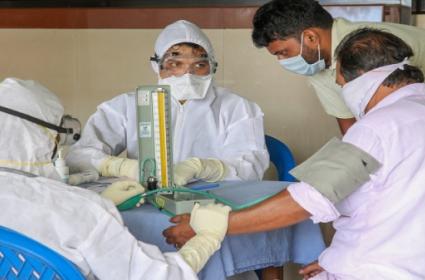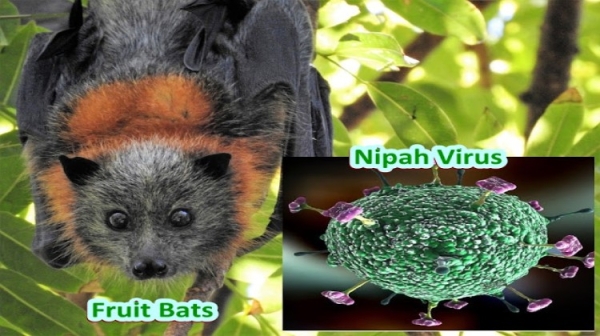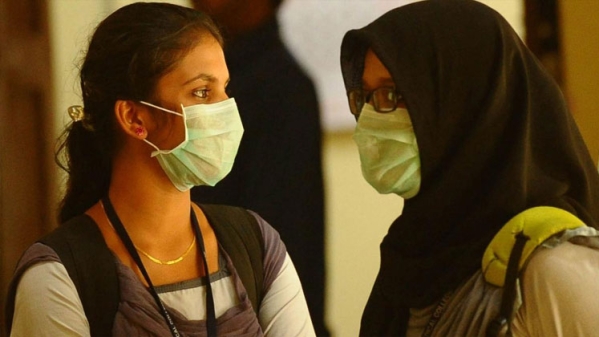Nipah Virus: Symptoms, Precautions And Treatment

Kochi: After a 23-year-old engineering student was confirmed for the deadly Nipah virus, the Kerala government has assured that adequate precautions have been taken and there is no reason for panic.
A total of 17 people had died last year in Kerala with the outbreak of the deadly Nipah virus.
The student has been admitted at a private hospital in Ernakulam. Kerala Health Minister KK Shailaja said the condition of the student is stable and 86 people including four of his roommates in Thodupuzha, family members in Ernakulam, who came in contact with him are under supervision.
Shailaja has said that the priority is to prevent the disease from spreading.
Here's all you need to know about Nipah:
- What is Nipah Virus (NiV)?
According to the WHO, Nipah virus is a newly emerging disease that can be transmitted from its reservoir (natural wildlife host), the flying foxes (fruit bats), to both animals and humans.
- Where does the name come from?
It takes its name from Sungai Nipah, a village in Malaysia where it was first identified.
- How does the virus spread among humans?
Nipah virus can be transmitted by infected pigs, or by fruit bats, through their secretions of saliva, urine or faeces.
The other mode of transmission is human to human, through body secretions and respiratory secretions.

- Symptons of Nipah
Human infection can range from asymptomatic infection, acute respiratory infection (mild, severe), and fatal encephalitis. Infected people initially develop influenza-like symptoms of fever, headache, myalgia, vomiting and sore throat.
This can be followed by dizziness, drowsiness, altered consciousness, and neurological signs that indicate acute encephalitis.
Some people can also experience atypical pneumonia and severe respiratory problems, including acute respiratory distress. Encephalitis and seizures occur in severe cases, progressing to coma within 24 to 48 hours.
- Cure for Nipah
According to WHO, there is no vaccine currently available for either humans or animals and NiV-infected patients are currently limited to supportive care (i.e., rest, fluid intake) to help manage symptoms. Early treatment with the antiviral drug, ribavirin, can reduce the duration of fever and the severity of disease. However, how well this treatment cures the disease or improves survival is still uncertain.

- Precautions to be taken
-Do not consume food contaminated by bat body fluid or bat urine / faeces.
-Do not drink toddy brew in open containers near palm trees.
-Avoid close and frequent contact with an infected person. Following good hygienic practices like washing hands before eating and regularly after visit to public places and hospital is recommended.
-Avoid close physical contact with patients suspected to have Nipah virus infection. Do no share utensils, clothes, restrooms used by an infected person.
-Health care providers who treat infected persons should wear protective gear- gowns and face masks.

- What happened in Kerala last year?
On May 19, 2018, Nipah virus disease (NiV) outbreak was reported from Kozhikode in Malappuram district.
As per state government figures, the Nipah virus had claimed 17 lives -- 14 in Kozhikode and three in neighbouring Malappuram in May last year.
- When did Nipah outbreak happen?
The first recorded Nipah virus outbreak came from Sungai Nipah village of Malaysia in 1998-99. The virus spread to humans from infected pigs. The World Health Organisation says taht nearly 300 people were infected and out of that 100 were killed in a year. However, after that no outbreak was reported in the region.
In Malaysia, Nipah virus mainly spread from infected pigs like from their respiratory droplets, nasal secretions among others.
- When was India first infected with Nipah?
In India, the earliest records of Nipah outbreaks were reported in Siliguri in 2001 and Nadia, West Bengal in 2007. In the country, the virus spread from fruits and fruit products, especially ones that were contaminated with the urine or saliva from infected fruit bats.
The outbreak in Siliguri claimed the lives of 45 people where 66 people were found infected. In Nadia, five were infected and all had died.
Also Read: Nipah Fear Grips Kerala After Student Tests Positive For Deadly Virus
Also Read: Keep Nipah Virus Away With These Simple Tips
Also Read: Nipah Virus Symptoms, Treatment, Precautions, Cure



















